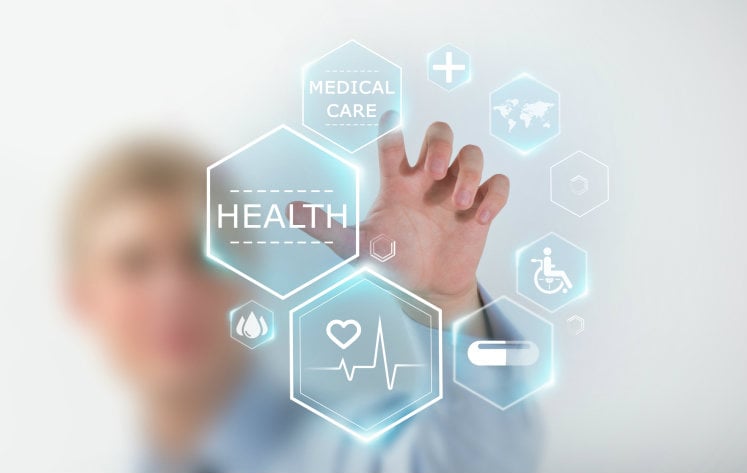Finest Healthcare RCM Practices to Improve Operational Efficiency and Collections
Finest Healthcare RCM Practices to Improve Operational Efficiency and Collections
Blog Article
A Comprehensive Overview on Exactly How Medical Care RCM Works to Simplify Invoicing and Collections
Browsing the intricacies of healthcare revenue cycle monitoring (RCM) is crucial for providers aiming to improve their invoicing and collections procedures. The guide unboxes the complexities of RCM, from person registration to accounts receivable administration, offering insights right into enhancing each step.
Understanding Earnings Cycle Administration
Grasping the ins and outs of Earnings Cycle Monitoring (RCM) is essential for healthcare companies intending to enhance their monetary efficiency. RCM is a vital management function that incorporates the entire financial procedure of individual care, from the preliminary appointment readying to the final repayment of the equilibrium. It is a complex procedure developed to determine, gather, and handle the income from the services offered to people. Effective RCM ensures that healthcare carriers obtain timely and accurate repayments, lessening the danger of revenue loss and improving capital.
The RCM procedure starts when a patient schedules an appointment and prolongs via the person's treatment journey, consisting of payment and collections. A crucial goal is to minimize the time in between providing a solution and obtaining settlement, thus boosting the organization's monetary health. RCM involves different features such as client registration, insurance confirmation, fee capture, coding, asserts submission, payment publishing, and handling rejections and appeals.
Trick Components of RCM
In the realm of Earnings Cycle Monitoring (RCM), recognizing its key components is basic to attaining financial performance within medical care organizations. RCM is an extensive procedure that includes various phases, each vital to guaranteeing reliable invoicing and collections. The key elements consist of client registration, insurance coverage verification, fee capture, coding, claim submission, settlement publishing, and accounts receivable management.


As soon as coded, cases are submitted to payers, where accuracy is vital to stay clear of denials or hold-ups - Healthcare RCM. Settlement posting includes taping the gotten settlements, which permits the reconciliation of accounts. Finally, balance dues management focuses on tracking and attending to unsettled insurance claims, ensuring timely follow-up and resolution
Each element of RCM is interconnected, and inefficiencies in any component can disrupt the entire cycle. As a result, grasping these aspects is necessary for health care companies to maximize earnings and enhance their financial health.
Strategies for Efficient Billing

Systematizing billing procedures throughout the organization is one more essential approach. Developing clear standards for paperwork, coding, and entry aids preserve uniformity and conformity with regulative needs. Training staff frequently on these procedures makes sure everybody is updated with the most current changes in invoicing codes and payer policies.
Exact fee capture is necessary in preventing earnings leak. Carrying out regular audits and tracking systems enables for the identification and modification of discrepancies prior to they influence income. In addition, maintaining open lines of communication with payers assists to quickly solve any type of disputes or misunderstandings that might arise.

Last but not least, interesting patients early in the invoicing process by offering clear click now estimates and academic products about their economic responsibilities can dramatically reduce confusion and enhance repayment timeliness. These approaches collectively add to an extra economically healthy and efficient billing system.
Enhancing Collections Procedures
Offered the intricacies of clinical billing and the selection of payer needs, enhancing the collections procedure involves applying calculated steps that guarantee prompt and precise payment of services rendered. Automation devices can help in tracking insurance claim statuses, sending out prompt tips to patients, and managing denials more efficiently.
Training team to understand the subtleties of insurance plan and payment codes is similarly crucial. This understanding empowers them to deal with payment inconsistencies rapidly Discover More Here and communicate effectively with people regarding their financial duties. Furthermore, clear and clear client interactions are critical. Offering in-depth descriptions of fees and using flexible layaway plan can enhance client fulfillment and timely repayments.
Normal audits of the collections procedure should be performed to determine areas for renovation and guarantee compliance with regulations. By examining information, healthcare companies can determine patterns, expect potential problems, and adjust techniques accordingly (Healthcare RCM). Inevitably, a well-enhanced collections process not only sustains monetary wellness but additionally adds to a much more seamless experience for individuals and team alike
Optimizing Revenue Streams
Building upon the structure of a strong collections process, medical care companies can even more reinforce their monetary stability by strategically maximizing income streams. This includes a multi-faceted approach, starting with an extensive analysis of existing profits resources to recognize inadequacies and locations for growth. Using advanced information analytics devices enables companies to acquire insights right into payer mix, person demographics, and service application patterns, enabling data-driven choices that improve profits capture.
Carrying out automated invoicing systems can considerably minimize errors and quicken claims refining, making sure that revenue is collected more efficiently. Moreover, optimizing payer agreements with normal negotiations can improve reimbursement rates and terms, directly impacting the lower line. Diversifying solution offerings, such as including telehealth or health care, can likewise bring in a more comprehensive patient base, hence raising revenue potential.
An additional vital component is enhancing individual engagement and complete satisfaction, as completely next page satisfied patients are most likely to stick to treatment plans and make prompt settlements. Providing flexible payment options and clear payment methods can boost collections and foster individual loyalty. Healthcare RCM. By taking on these approaches, medical care companies can create a more durable economic structure, guaranteeing sustained growth and stability in an ever-changing market landscape
Conclusion
Finally, medical care Earnings Cycle Management (RCM) plays an essential duty in enhancing billing and collections processes by integrating essential parts such as person registration, insurance verification, cost capture, coding, asserts submission, and balance due monitoring. By utilizing sophisticated modern technology, standardizing treatments, and cultivating patient involvement, health care service providers can substantially decrease case rejections, accelerate repayment cycles, and boost money flow. This detailed technique to RCM inevitably leads to boosted financial performance and sustainability for medical care organizations.
The RCM procedure starts when a client timetables a visit and expands via the individual's care trip, consisting of billing and collections.Another essential element is improving person interaction and satisfaction, as satisfied individuals are extra most likely to adhere to therapy plans and make prompt repayments. Providing flexible payment options and clear invoicing methods can improve collections and foster individual commitment.In verdict, health care Profits Cycle Monitoring (RCM) plays a crucial role in maximizing billing and collections processes by incorporating vital components such as patient registration, insurance confirmation, fee capture, coding, claims submission, and accounts receivable monitoring. By using sophisticated innovation, standardizing treatments, and promoting person interaction, medical care providers can substantially minimize insurance claim denials, accelerate settlement cycles, and improve money circulation.
Report this page